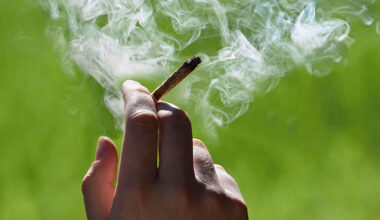As demand for water increases and the supply remains limited, marijuana cultivators might need to change the way they think about and measure their use of this precious resource, according to a new report compiled by three organizations.
Early efforts quantified facility water use by focusing on gallons per plant.
But that model doesn’t take into account the variability in plant density, size and cultivation period, noted the report.
The report, released Feb. 24 through a partnership among Washington DC-headquartered marijuana analytics company New Frontier Data, Oregon-based Resource Innovation Institute and the Berkeley Cannabis Research Center in California, can be downloaded for free here.
As an alternative, the report – “Cannabis H2O: Water Use and Sustainability in Cultivation” – outlines new benchmarks that focus on water productivity, efficiency and demand.
It concludes that the new metrics are better at accounting for water use in the variety of outdoor, greenhouse, indoor and hybrid facilities that are currently used in legal cannabis cultivation across the United States.
The research comes as challenging climate conditions, especially drought, will make water an even more important input to profitable cultivation as growers deal with water restrictions, scarcity and higher water costs.
Productivity
Water productivity is the measurement of grams of dry trimmed flower produced per gallon of water, which provides visibility into how effectively a grower is using water.
The larger the amount of flower produced represents more effective use.
Greenhouses are more productive than indoor or outdoor cultivation models, according to self-reported water data from RII’s Cannabis PowerScore platform, a free energy-, water- and waste-benchmarking software.
Cannabis greenhouses produced 5.17 grams of flower per gallon of water, according to the report. This was a slight improvement over indoor grows, which yielded 4.84 grams per gallon.
Outdoor facilities reported the least-efficient use of water, at 3.13 grams per gallon.
Efficiency
Another measure of efficiency is a facility’s annual use of irrigation water per square foot of space used for cultivation.
Water efficiency uses the tray-and-table area used for plant production and excludes noncultivation areas such as walkways.
Low water-use numbers for this metric indicate better facility water use.
Outdoor facilities were the most efficient using this metric, according to RII data, averaging 11 gallons per square foot of cultivation area compared with 80 gallons for greenhouses and 198 for indoor facilities.
The disparity could be in the way outdoor grows report canopy areas, as plant spacing and plant sizes in outdoor farms make it hard to account for the unused space between plants, the report notes.
Demand
Measuring how much water a facility uses during the various points of the growth cycle can provide valuable information for planning and sustainability.
Demand is measured by application and storage over the course of months and years.
Application demand measures the facility’s direct water use at the time, while some cultivators, such as those in California, will need to track their water storage during wetter parts of the season.
Indoor facilities had higher water demand than other facility types.
RII reported that indoor facilities on its Cannabis PowerScore platform averaged 605,180 gallons a year, more than double that of outdoor and greenhouse facilities.
The indoor facilities averaged 69,000 to 124,000 gallons a month, with demand peaks in March, June, September and December.
The cyclical nature of the water use could be related to single harvests rather than perpetual harvest throughout the year, legalization schedules or syncing with holiday and summer sales demand.
Measuring water use
While the data offers insight into usage, the report highlights the difficulty in comparing cultivation facilities.
“Our research shows there are still massive differences between cannabis production techniques and to some extent this variation also is seen in our water use data,” the report noted.
For example, more established facilities will use water more efficiently than new builds.
The group is confident that as the industry matures, efficient water use will become more important – just as it has for other agricultural crops.
A big part of that maturity will be creating meaningful water-use metrics.
Andrew Long can be reached at [email protected].
Medical Disclaimer:
The information provided in these blog posts is intended for general informational and educational purposes only. It is not a substitute for professional medical advice, diagnosis, or treatment. Always seek the advice of your physician or other qualified healthcare provider with any questions you may have regarding a medical condition. The use of any information provided in these blog posts is solely at your own risk. The authors and the website do not recommend or endorse any specific products, treatments, or procedures mentioned. Reliance on any information in these blog posts is solely at your own discretion.







